And no, it's not a flat joke that Galax / KFA2 presents to us here in the form of the GeForce GTX 1070 Katana. Speaking of Katana: This name is now almost a running gag, because you can find Katana or Shinken (not ham!), i.e. the Japanese longsword, is now a popular name addition to a lot of current products, even if it is in the form of a dashing soundbar from Creative. But we are digressing…
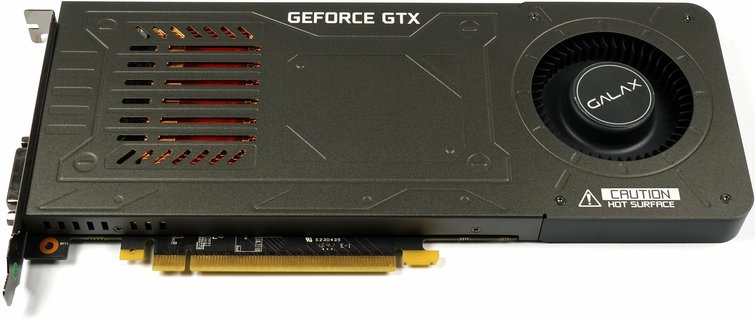
But what the manufacturer wants to show us with the flounder is proof that single-slot is still alive in the consumer sector. Sure, Nvidia has a very similar product on offer with the Quadro P4000, but its performance craving slack has already been curbed by a stomach reduction from the factory.
However, it is essential that we make one more thing in order to really do justice to the product, the manufacturer and, of course, in the end, to us: the way the card was initially delivered with the first BIOS is not possible. Well, it would be, so somehow, just not as everyone had hoped. Which meant that we had to ignite stage two, which must be the basis for a new BIOS, so that the pixel disc can also run safely and long-distance to the high form.
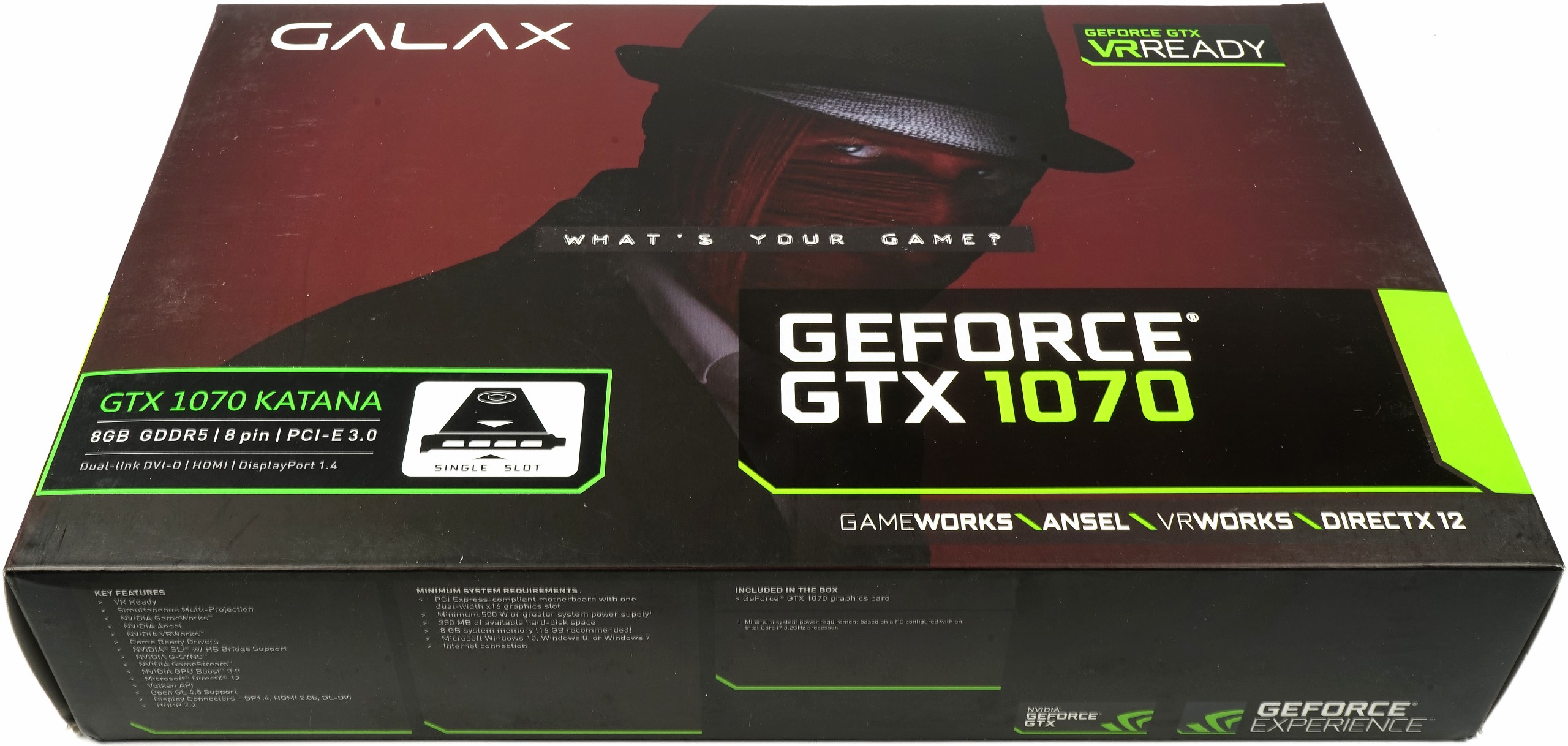
We have therefore also given the basic settings we have changed a separate, longer paragraph, which should be read first until a new BIOS is made available and whose proposals should then be taken over 1:1. Otherwise, you have the choice between sleeping pills or fireflies, depending on the external condition. But we do not want to pre-empt.
The card is unique in its niche position and technical implementation and we also liked it extremely well after the necessary adaptation for the advertised application. At least we can spoil that at this point, because you don't have to be a clairvoyant to know what is feasible in this performance class and what is not.
So it's not an ultra-fast overclockcard for Kevin Normalgamer, who also acts so whisper-quietly that Mum or Aunt Helga doesn't notice at night that the Filius is still secretly joking. Don't go and it will certainly never work, because physics is still a serious science even at Kevin's home alone. Point.
Unboxing, dimensions and connections
With only 600 grams, the Katana is abundantly light and therefore has no bacon rolls on the narrow hips. The rather modest 25.5 cm real installation length (outer edge slot aperture until the end of the cover), the reasonable height of 10.5 cm (upper edge motherboard slot to top edge cover) and the installation depth of 1.3 cm make the card smooth to the hunger hook model, which is characterized by each Letter slot fits.
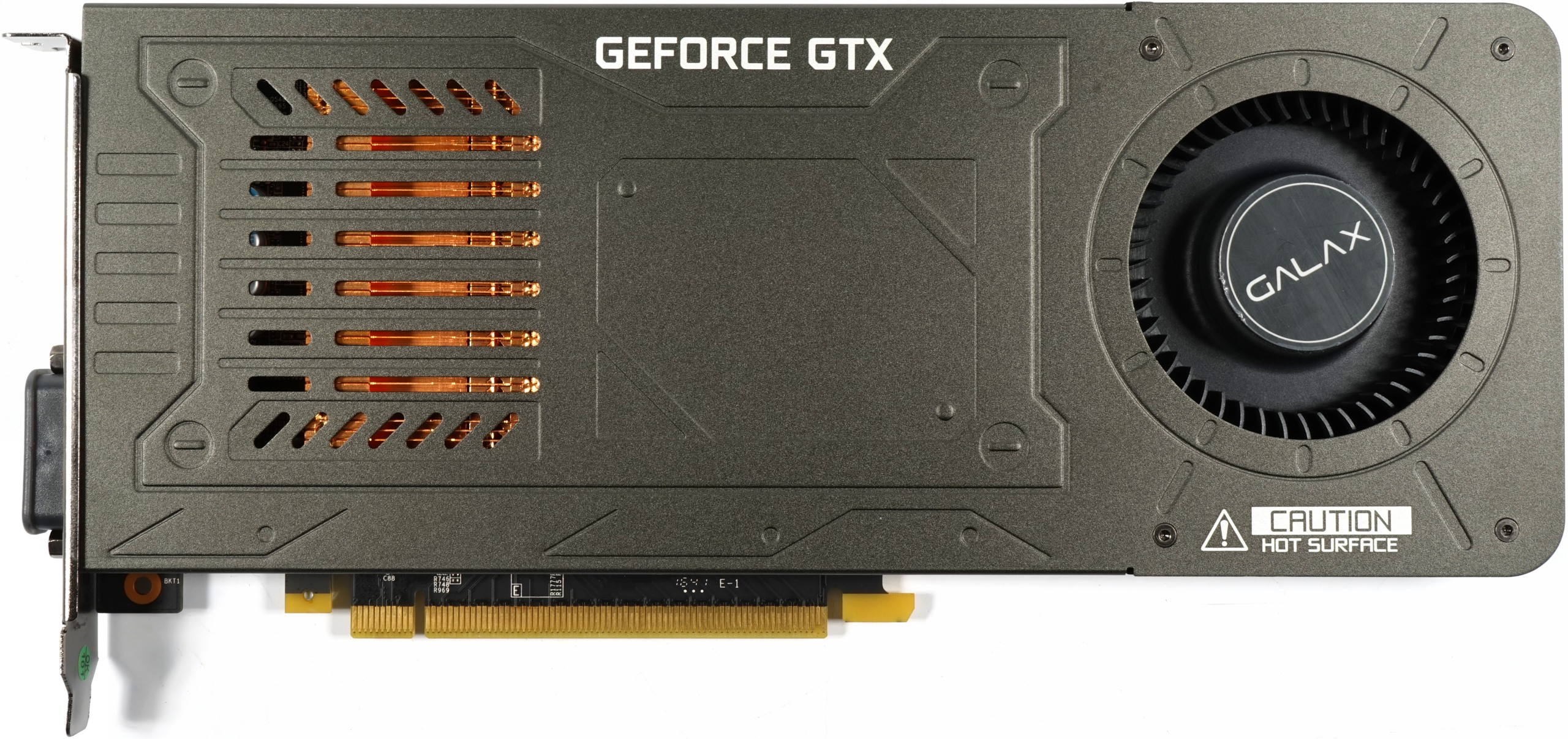 |
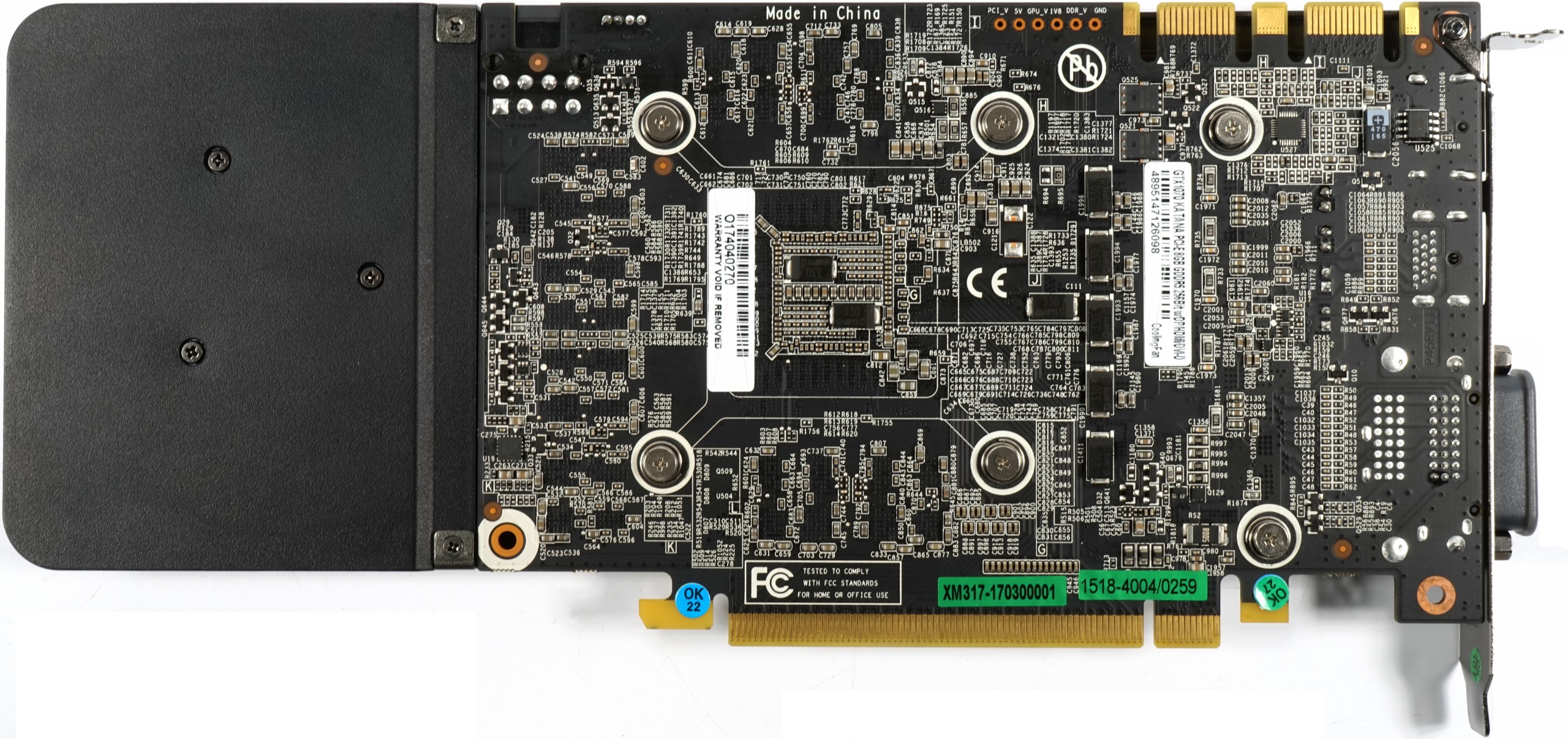 |
The top cover made of light metal is painted in gun metallic, which fits quite well with the card. The back is conspicuously open to suit the summer and also dispenses with any covers. Backplate is therefore not.
The top shows an 8-pin power supply connector, the SLI connectors and the fan connector, nothing more.

The bottom and top are otherwise closed, while the fan chamber made of black plastic was in fact only flanged as an extension to the significantly shorter board. You can't see it from above, because the cover also includes the plastic appendix.

The back is also completely closed, so that no hot waste heat can hit installed hardware.
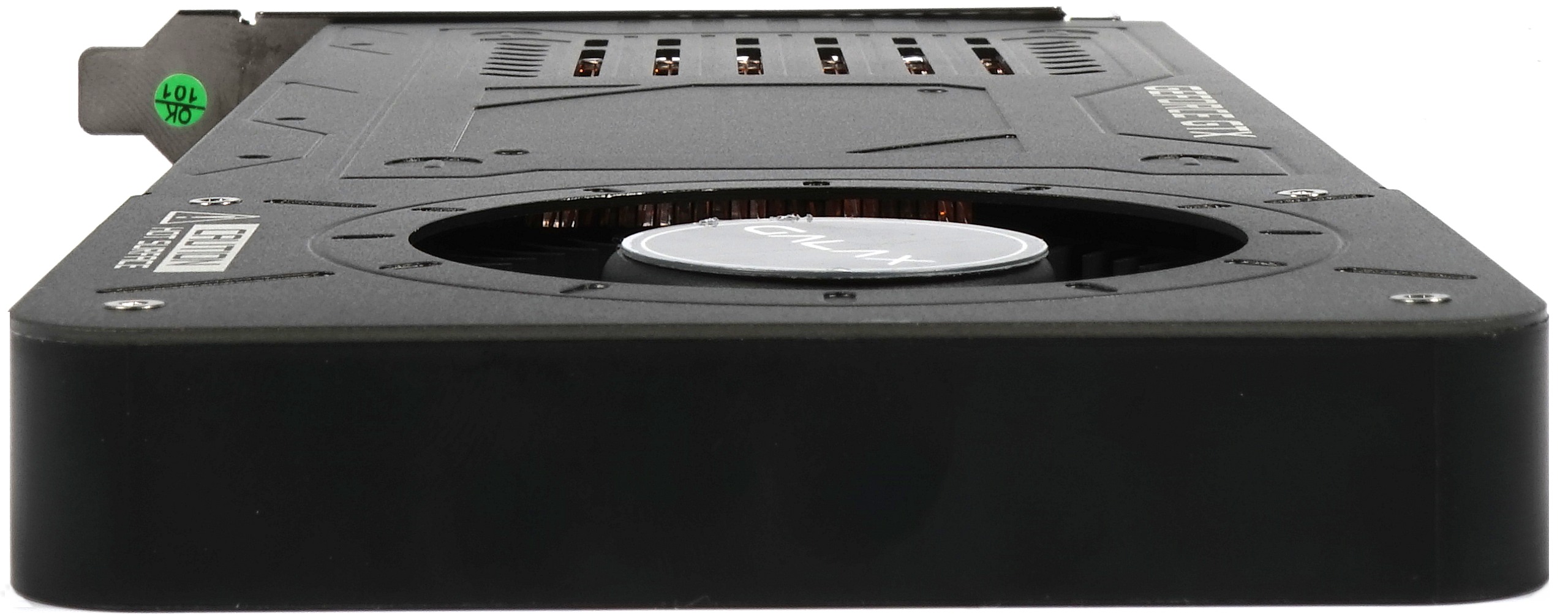
In the case of connections, however, there have been serious compromises, if only due to space. All you can find is a (probably unavoidable) DVI-D port, an HDMI-2.0 output, and a DisplayPort jack.

Specifications
The GPU-Z screenshot shows us the most important key data in advance, whereby the actual boost achieved with our model was significantly higher:
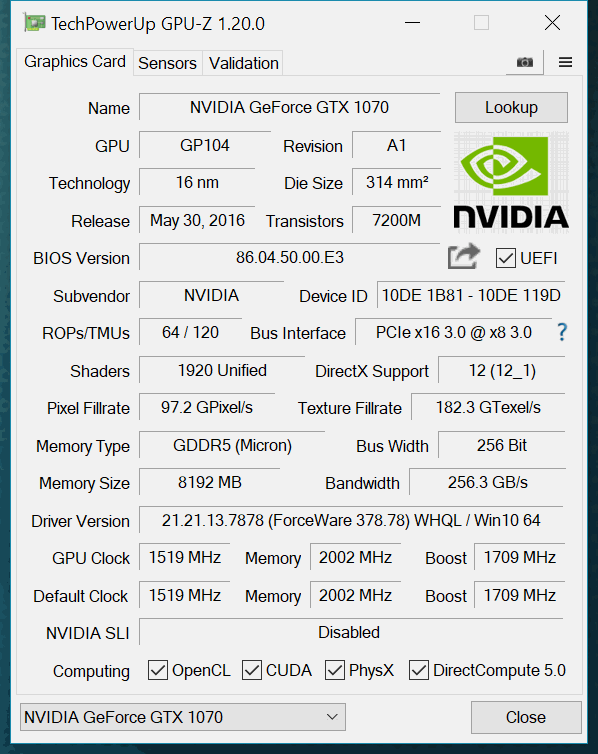
Finally, the whole thing again as a tabular comparison to the other relevant graphics card models:
| Nvidia Geforce GTX 1070 FE |
Galax GTX 1070 Katana |
Nvidia Geforce GTX 1080 FE |
Nvidia Geforce GTX 980 Ti |
|
|---|---|---|---|---|
| Gpu |
GP104 | GP104 |
GP104 | GM200 |
| CUDA cores |
1920 | 1920 | 2560 | 2816 |
| Base clock | 1506 MHz | 1569 MHz |
1607 MHz | 1000 MHz |
| Boost clock |
1683 MHz+ | 1683 MHz |
1733 MHz+ | 1076 MHz+ |
| Memory Size & Type |
8 GByte GDDR5 |
8 GByte GDDR5 |
8 GByte GDDR5X |
6 GByte GDDR5 |
| The size |
314 mm2 | 314 mm2 | 314 mm2 | 601 mm2 |
| Technology |
16 nm | 16 nm | 16 nm | 28 nm |
| Transistors |
7.2 billion | 7.2 billion | 7.2 billion | 8 billion |
| Texture Units |
120 | 120 | 160 | 176 |
| Texture fill rate |
180.7 GT/s | 182.2 GT/s |
257.1 GT/s | 214 GT/s |
| Rops |
62 | 62 |
64 | 96 |
| Pixel fill rate |
93.4 GPix/s | 97.2 GPix/s |
114.2 GPix/s | 116.7 GPix/s |
| Storage data rate |
8 Gbps | 8 Gbps | 10 Gbps | 7 Gbps |
| Storage bus |
256 bits | 256 bits | 256 bits | 384 bits |
| Memory bandwidth |
256.3 GByte/s | 256.3 GByte/s | 320 GByte/s | 336 GByte/s |
| Tdp |
150 watts | 150 Watt (PT) |
180 watts | 250 watts |
Test system and measurement methods
The new test system and the methodology have already been described in great detail in the basic article "How We Test Graphics Cards" (English: "How We Test Graphics Cards") and therefore, for the sake of simplicity, we now only refer to this detailed Description. So if you want to read everything again, you are welcome to do so. However, we have improved CPU and cooling once again in order to largely exclude possible CPU bottle necks for this fast card.
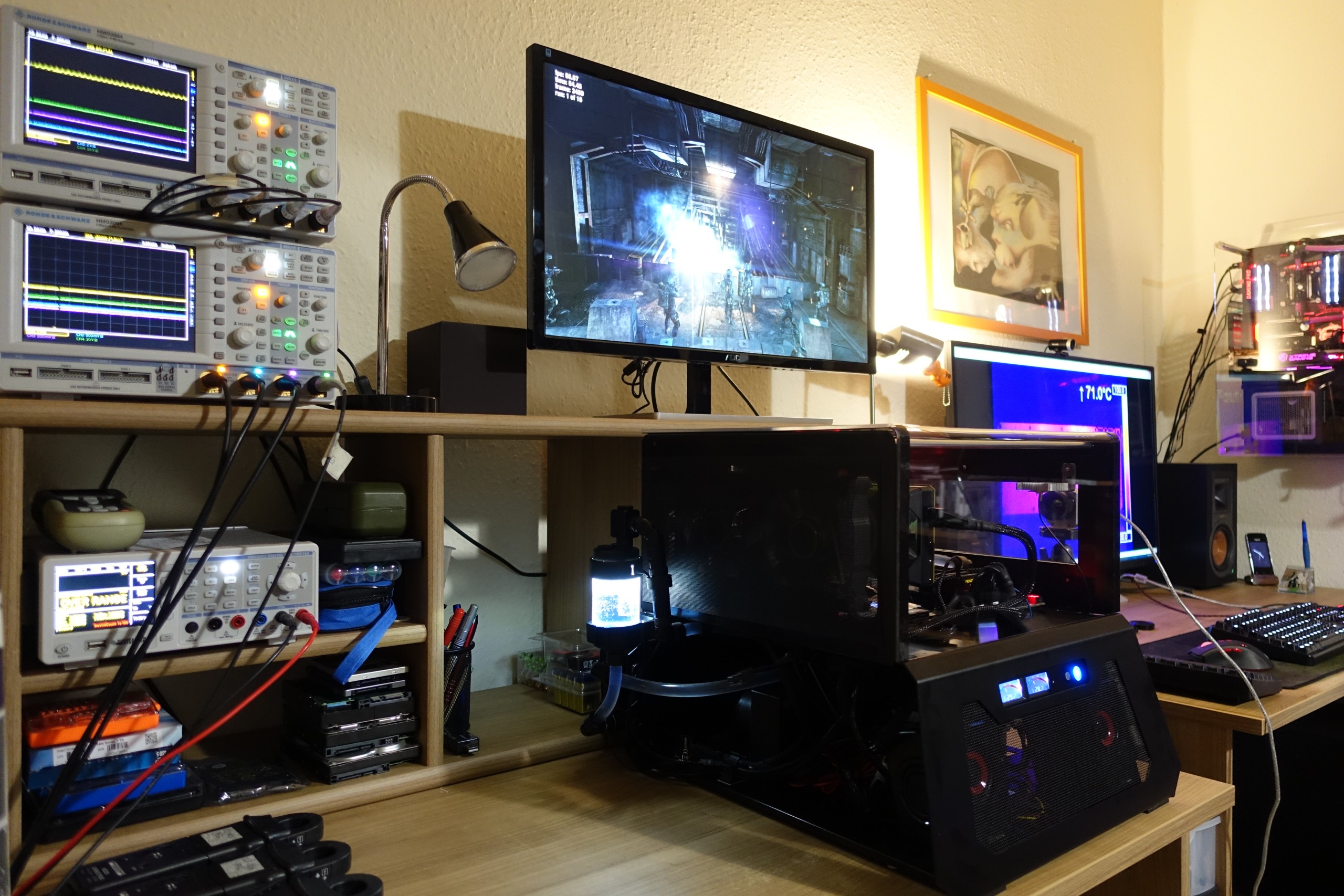
If you are interested, the summary in table form quickly provides a brief overview:
| Test systems and measuring rooms | |
|---|---|
| Hardware: |
Intel Core i7-6900K -4.3GHz MSI X99S XPower Gaming Titanium Corsair Vengeance DDR4-3200 1x 1 TByte Toshiba OCZ RD400 (M.2, System SSD) 2x 960 GByte Toshiba OCZ TR150 (Storage, Images) Be Quiet Dark Power Pro 11, 850-watt power supply Windows 10 Pro (all updates) |
| Cooling: |
Alphacool Ice Block XPX Alphacool Ice Age 2000 Chiller 2x Be Quiet! Silent Wings 3 PWM (Closed Case Simulation) Thermal Grizzly Kryonaut (for cooler change) |
| Housing: |
Lian Li PC-T70 with expansion kit and modifications Modes: Open Benchtable, Closed Case |
| Power consumption: |
non-contact DC measurement on the PCIe slot (Riser-Card) non-contact DC measurement on the external PCIe power supply Direct voltage measurement on the respective feeders and on the power supply 2x Rohde & Schwarz HMO 3054, 500 MHz multi-channel oscillograph with memory function 4x Rohde & Schwarz HZO50, current togor adapter (1 mA to 30 A, 100 KHz, DC) 4x Rohde & Schwarz HZ355, touch divider (10:1, 500 MHz) 1x Rohde & Schwarz HMC 8012, digital multimeter with storage function |
| Thermography: |
Optris PI640, infrared camera PI Connect evaluation software with profiles |
| Acoustics: |
NTI Audio M2211 (with calibration file) Steinberg UR12 (with phantom power for the microphones) Creative X7, Smaart v.7 own low-reflection measuring room, 3.5 x 1.8 x 2.2 m (LxTxH) Axial measurements, perpendicular to the center of the sound source(s), measuring distance 50 cm Noise in dBA (Slow) as RTA measurement Frequency spectrum as a graph |
































Kommentieren